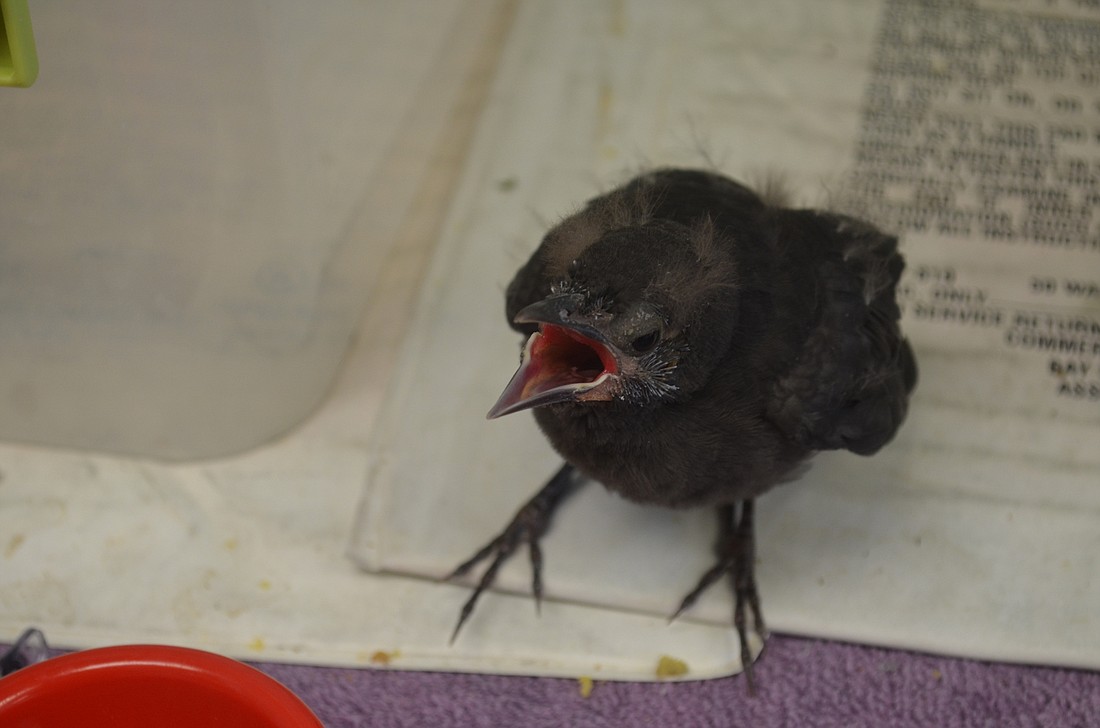- October 19, 2022
-
-
Loading

Loading

Baby bird season at Save Our Seabirds is a busy time of year. But many chicks at the bird rescue sanctuary didn't originally need to be rescued.
“Well-meaning people see them on the ground and think they need help,” said Linda Gnass, a volunteer for three and a half years. “In actuality, they’re fine.”
If a baby bird is found outside a nest, many people think it is without a mother and in need of help. Usually, however, the mom is nearby.
“We tell people to just observe the bird for a while,” Gnass said. “Typically, they’ll find a bird under a bush, and most of the time, they’ll find the mother. If the mom is there, it’s okay. The best thing to is to let the mom take care of the bird. This is all part of the learning process for birds. For a human to interfere would be the wrong thing to do.”
Many times, the bird is a fledgling trying to fly for the first time, and it is normal for them to end up on the ground.
“People who see that need to realize those birds don’t need help,” Save Our Seabirds CEO David Pilston said. “When possible, if the baby is safe, we prefer to keep it in the wild with mama. We can take care of them, but their moms can take care of them best. We can’t do the jobs moms do.”
Additionally, if a bird or nest is on the ground, it is acceptable for humans to put them back in a tree.
“It’s a common myth that the mother will reject the bird after a human touch,” Pilston said. “That’s not true. Birds don’t have that sense of smell. All they want is to take care of their baby.”
No matter the life stage of the bird, if it is found to be in immediate danger, then a rescue may be necessary.
“If the baby has no feathers, it is very young and obviously needs help,” Pilston said. “If there’s some threat, whether it’s a cat or another predator such as dogs or hawks or traffic, you definitely need to get the baby bird out of the environment.”
Save Our Seabirds currently has almost two dozen babies, according to Pilston. Volunteers teach birds to eat on their own with a meal consisting of mealworms and chopped up scrambled eggs and grapes. When they are able to eat independently, they are then sent to a larger cage outside, where volunteers can gauge their ability to fly.
Depending on the breed and extent of an injury, Save Our Seabirds will keep a bird for several weeks to several months before release. The sanctuary releases birds back into the wild almost every day.
“We don’t release them if they’re too injured to survive in the wild, an invasive species or too imprinted with people.” Pilston said. “We do release far more than we keep. Probably 20 times as many.”
For Save Our Seabirds to continue operating successfully, it is important volunteers are able to focus on those birds that actually do need rescuing.
“We are loaded with birds right now,” Gnass said. “We do whatever it takes to pull this place together, but we ask that, please, people observe a bird before they think they’re rescuing. Sometimes, they’re not rescuing it at all.”